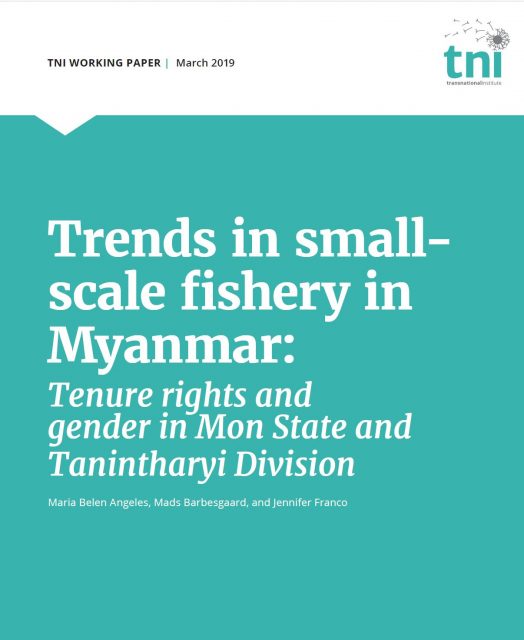Report
391 Views
Trends in Small-scale Fishery in Myanmar: Tenure Rights and Gender in Mon State and Tanintharyi Division
March 12th, 2019 •
Author:
Transnational Institute (TNI)
•
2 minute read


“Fish is the world’s most traded food commodity, and Myanmar is on the cusp of becoming a major international source.”
Myanmar’s fishery sector is increasingly celebrated for its potential, and the country’s role as a major international source of fishery products (through wild-capture as well as aquaculture) is expected to expand further with investment in the years to come. Dramatic changes are reshaping the small scale-fishery sector, driven by new investment and diverse government policies oriented toward opening up the country. Amidst all this, the voices and aspirations of those who are among those being most affected by these dynamics – men and women in the small-scale fishery sector – are mostly invisible.
The SSF Guidelines, along with the VG Tenure, committed States to the cross-cutting principle of gender equality and all parties to “support small-scale fishing communities, in particular to indigenous peoples, women and those relying on fishing for subsistence, including, as appropriate, the technical and financial assistance to organize, maintain, exchange and improve traditional knowledge of aquatic living resources and fishing techniques, and upgrade knowledge on aquatic ecosystems” (para. 11.7).
This paper traces the process and reflects on the findings of the first step in such a journey currently being undertaken jointly with several small scale fishing communities and local support organizations in Mon State and Tanintharyi Region in Myanmar, to test using the SSF Guidelines in settings marked by major pressures from various forms of control over key resources, for agribusiness, large-scale extraction of oil and minerals and for special economic zones.
This working paper has been published as a chapter in FAO Fisheries and Aquaculture Technical Paper No. 644. The original Technical paper that includes other case studies from across the world is available here.
Download full paper HERE.
၎
င
၎
၎

